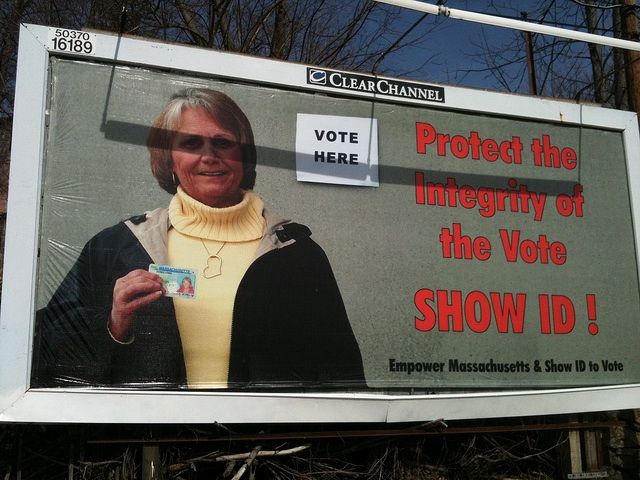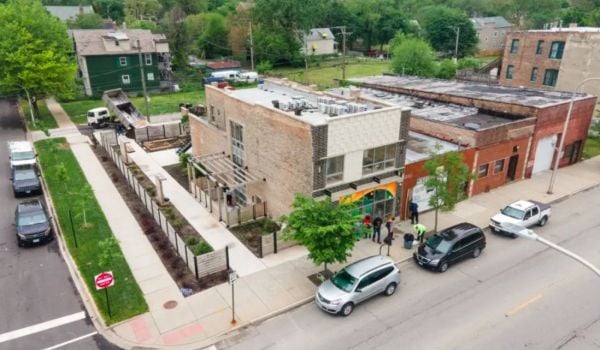It may be difficult to say exactly how the Supreme Court’s Tuesday decision striking down a core provision of the Voting Rights Act will affect urban communities, particularly those blue diamond cities in the rough red states. The simple answer is that sure, it will mostly affect people of color who often make up majorities in urban areas while remaining clear minorities statewide, as seen in most of the South from Alabama to Arizona.
To fully understand the implications, though, let’s take a step back to June 24, when Hanover County, Va., near Richmond, was released or “bailed out” from federal “Section Five” coverage under the Voting Rights Act. The context for the court was a steady demographic shift in the relatively affluent, majority Republican county. Hanover County’s white population is on a slight decline — it dropped from 88 percent in 2000 to 87 percent in 2010 — as was the case in most of Virginia and, for that matter, the rest of the South. Meanwhile, all of Hanover’s population growth is happening among its racial minorities, who currently account for 13.3 percent of the population. Despite the demographic shift, the county is governed by an all-white board of supervisors elected from seven districts.
Under the court’s release, the county, which is currently undergoing a redistricting process, no longer has to submit election changes to the federal government for “preclearance,” an examination into whether such changes might breed racial discrimination. As the minority population increases — projected to become 20 percent of the county by 2030, and close to 25 percent by 2040 — it may want representation on the county’s supervisors board to influence policies. District lines could be drawn (gerrymandered), though, to keep minorities in slim enough margins that they couldn’t elect a candidate of their choice to the board, the very thing Section Five reviews were designed to prevent.
Hanover County’s bailout, however, was meaningless. The following day, the U.S. Supreme Court declared in Shelby v. Holder that the coverage formula established under Section Four of the Act was unconstitutional. Now the entire nation is bailed out from the historic Civil Rights-era protection measures, even if future election changes might result in dilution or disenfranchisement.
If you followed the 2010-2012 voting rights battles, you may remember that photo voter ID laws passed in Texas, South Carolina, Mississippi, New Hampshire and Virginia were either blocked, modified or delayed due to Section Five reviews. The reviews found racial discriminatory effects in Texas’ and South Carolina’s laws. But those were just the headliners. Most Section Five cases don’t make the news or don’t involve voter ID, and only a tiny crop involve state election laws. Dozens of election changes happen weekly and are produced by counties, cities, towns and school districts. One 2009 Supreme Court hearing concerning the Voting Rights Act’s constitutionality involved a utility district.
The vast majority of election changes affected by the Supreme Court’s decision happen exclusively in local jurisdictions. The top two kinds of election changes submitted to the U.S. Attorney General for preclearance were polling place relocations and annexations — more than 235,000 such submissions — both of which are determined by county and city governments. We often read about state redistricting plan challenges, because they determine Congressional and general assembly seats. But many of the 11,434 redistricting plans submitted for Section Five review came from counties like Hanover, which determines property tax rates, or whether a grocery store or a prison is built in your neighborhood.
This confirms what Loyola Law School election law professor Justin Levitt told me just before the Shelby decision: “One of the most important pieces of Section Five is that it prevents local efforts to discriminate in the allocation of local political power.”
Not only are local jurisdictions where most of the action is, but it’s also where voters have the least protections, because the smaller the municipality, the fewer resources there are to fight off potentially detrimental changes.
“When Texas passes a discriminatory statewide law, there are lots of voices in the fight,” Levitt told me. “But when a tiny municipality in southwest Texas does the same, it gets a lot less attention.”
So while many of us heard about the protracted battles between Texas Attorney General Greg Abbott and U.S. Attorney General Eric Holder over the state’s voter ID and redistricting laws — both blocked by Section Five — few heard about the smaller battle that played out in the Texas city of Beaumont concerning its school board.
In 2012, the Beaumont Independent School District proposed a number of changes including one that would have cut the terms of three black incumbent representatives from four years to two, while modifying the candidate qualification policy in ways that would have prevented the incumbents from running for reelection. The final insult was that the incumbents would have been replaced by candidates they had defeated in the previous election — candidates that had received zero black votes.
The Justice Department blocked that change and others the Beaumont school board proposed because the city couldn’t prove that the changes wouldn’t dilute black voting strength. The largest casualty of losing Section Five is that now the burden of proving racial disenfranchisement — whether by mistake or on purpose -— is on the voter, whereas before the burden was on the political unit proposing the change. This means that in the Beaumont case, the incumbents would have had to wait until after they were unseated before suing over the discriminatory effect. A federal reversal of the change would cause the school board to probably host another election at the taxpayer’s expense, along with any other delays and collateral damage to voters.
Now imagine if voters had to sue after every election change that resulted in diminished voter representation. There were 12 changes submitted to the Justice Department from Texas in the past ten days alone, all of them from school districts, counties and municipalities, and dozens more like them across the nation.
Of course, not all of the nation is covered by Section Five. In fact, most of it isn’t. The coverage formula identified areas where histories of voter discrimination existed. When the Voting Rights Act was passed in 1965, it set a triggering formula that allowed the federal government to monitor any jurisdiction where a poll tax or literacy test was used, or where black voter registration or turnout was less than 50 percent. Virginia, Alabama, Georgia, Mississippi, Louisiana and South Carolina were admitted under that criteria on August 7, 1965, along with about 40 counties in North Carolina.
Texas was added to the list in 1975, as was Alaska, Arizona and a bunch of counties in California, New Hampshire, Florida, New York and South Dakota after Congress updated the formula to trigger in jurisdictions that discriminated against non-English speakers. But that was the last update, which is why the Supreme Court declared it unconstitutional.
“Coverage today is based on decades-old data and eradicated practices,” Chief Justice John Roberts wrote in his opinion.
That’s only true, though, if you’re thinking about literacy tests and registration numbers. It fails to take into consideration subtler changes that could have the same disenfranchising effect — changes, like those found in Beaumont, that tend to go unnoticed until it’s too late to reverse the damage. Former Supreme Court chief justice Earl Warren clarified in 1968 that the Voting Rights Act “was aimed at the subtle, as well as the obvious” election regulations.
When Congress last reauthorized the Act in 2006, it reviewed over 15,000 pages of evidence of both subtle and obvious cases of discrimination captured from Section Five-covered areas. Again, the overwhelming majority of those happened in local jurisdictions. Justice Ruth Bader Ginsburg listed some of those in her Shelby ruling dissent:
In 2003, after African-Americans won a majority of the seats on the school board for the first time in history, Charleston County, South Carolina, proposed an at-large voting mechanism for the board. The proposal, made without consulting any of the African-American members of the school board, was found to be an “‘exact replica’” of an earlier voting scheme that a federal court had determined violated the VRA.
In 1993, the City of Millen, Georgia, proposed to delay the election in a majority-black district by two years, leaving that district without representation on the city council while the neighboring majority white district would have three representatives. DOJ blocked the proposal. The county then sought to move a polling place from a predominantly black neighborhood in the city to an inaccessible location in a predominantly white neighborhood outside city limits.
In 2004, Waller County, Texas, threatened to prosecute two black students after they announced their intention to run for office. The county then attempted to reduce the availability of early voting in that election at polling places near a historically black university.
In 1990, Dallas County, Alabama, whose county seat is the City of Selma, sought to purge its voter rolls of many black voters. DOJ rejected the purge as discriminatory, noting that it would have disqualified many citizens from voting “simply because they failed to pick up or return a voter update form, when there was no valid requirement that they do so.”
This was but a scintilla of the evidence Congress examined before voting unanimously in the Senate, and by large margin in the House, for the act to remain enforced until 2031. The Supreme Court let it sunset in 2013, symbolizing a kind of dyslexia that not only rearranged the year numbers, but also the nation’s priorities around racial equality.
Instead of privileging voters of color through enforcement of the 14th and 15th amendments that protect them from discrimination, the decision privileges white political power holders who continue to occupy the vast majority of government offices, whether we’re talking school boards or the U.S. Senate. Nowhere is this truer than in the places that were covered by the Section Five formula.
















